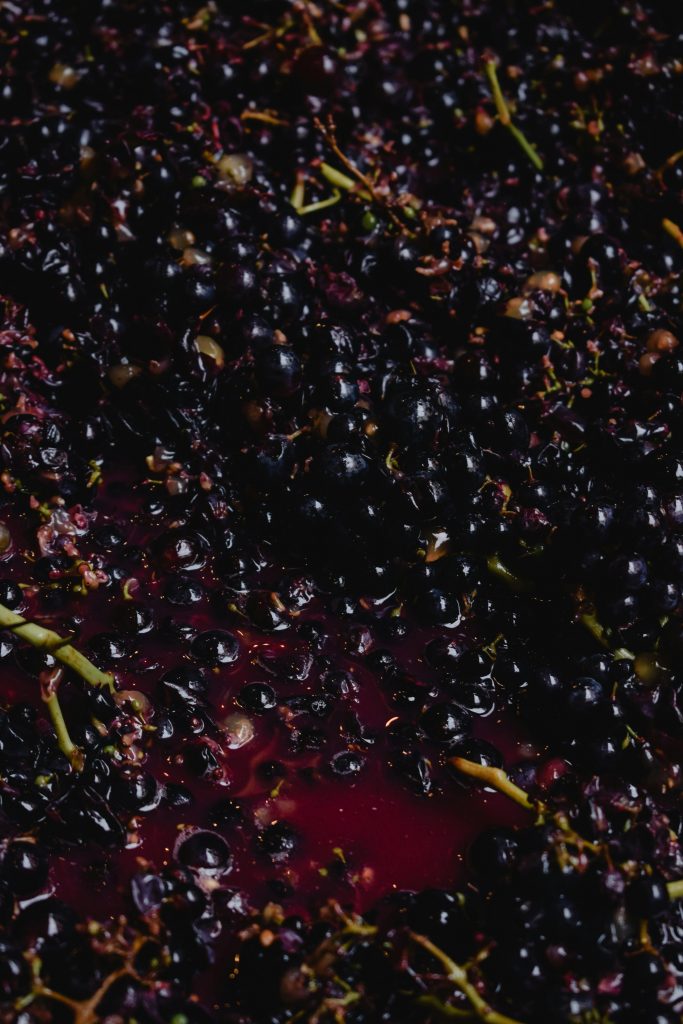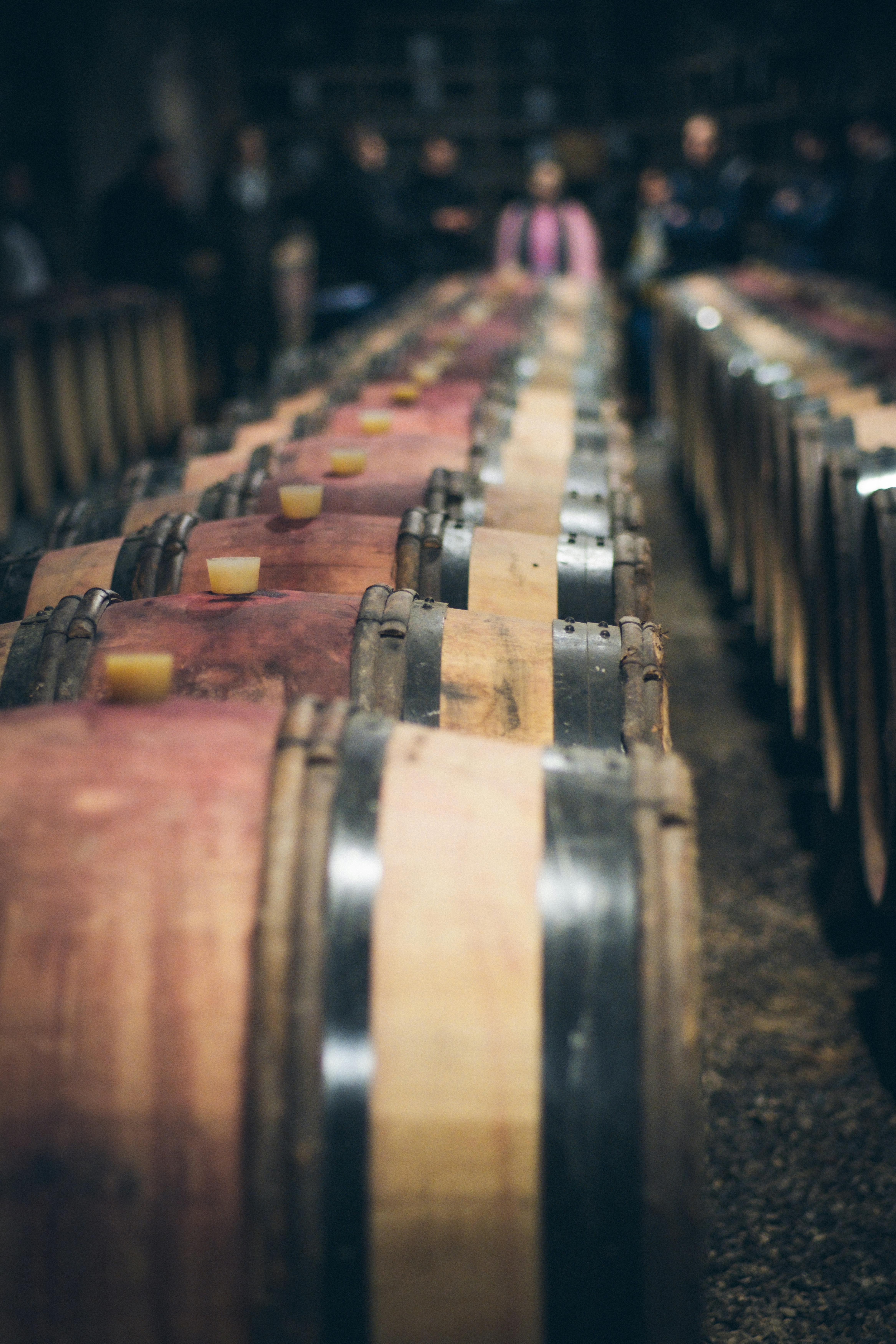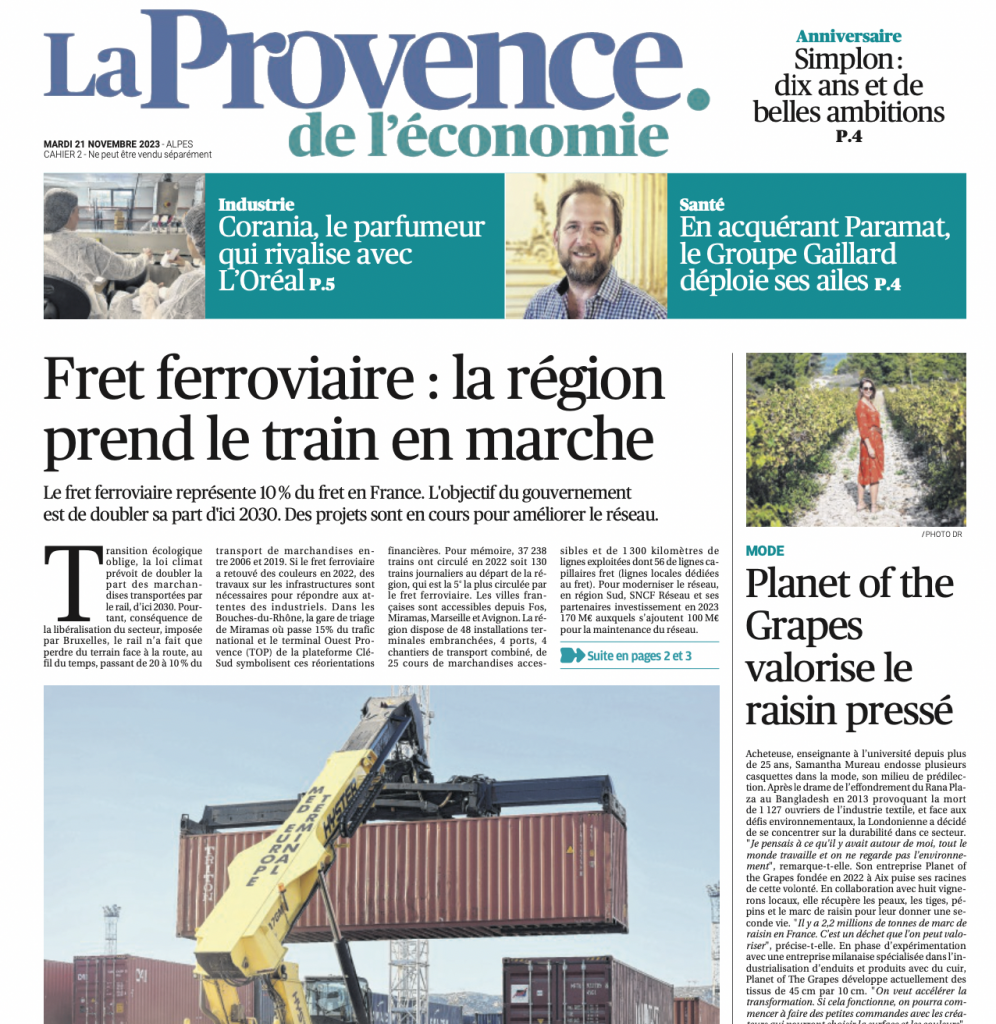Byproduct is something of a dirty word. Perhaps it shouldn’t be – but it is.
In part, of course, this is because the meat and leather industries use “byproduct” as justification for the industrial-scale mass production of tanned hides (claims which do not align with simple ideas of supply and demand and, regardless, do nothing to temper those industries’ effect on the planet). But, as well as that unfortunate game of greenwashing word association, it’s also because it implies a certain imbalance – it suggests a single quality product and, in addition, something lesser. Like Arnold Schwarzenegger and Danny DeVito in the 1988 comedy Twins.

That’s why “byproduct” doesn’t really feature in Planet of the Grapes’ vocabulary. As a concept, it’s the polar opposite of how we see the world and how we see our work. Yes, our grape leather is made from the stalks and skins of grapes, the parts which don’t wind up in your wine and you probably wouldn’t want to find floating in your decanter, but these are nonetheless parts of a high-quality product in the first place – they have the same origins as the grapes themselves and, having found a practical, progressive, and dare we say quite beautiful use for them, they are an objet de beauté in and of themselves.
“The term ‘co-product’ points to synergy and symbiosis – to something more positive than waste.”
After all, we don’t work with vignerons in possession of generations of knowledge – decades and collective centuries of know-how on growing the very best grapes – just to scoop up their waste.
That’s why, from the PotG perspective, “co-product” makes a lot more sense. And we’re not the only ones.
“The term ‘co-product’ points to synergy and symbiosis,” says Samantha Mureau, founder of Planet of the Grapes. “With the grape ‘marc’ – which is a more positive and significant word than ‘waste’ – that is collected after the pressing and fermenting of the grapes for wine, the distilleries take it away and off the vignerons hands. The distillery certainly doesn’t see this as ‘leftovers,’ as they distill the grape marc and make stronger alcohols or spirits such as grappa.”
Of course, if you’ve tried grappa then you might well have thoughts about its standing in comparison to wine – but that’s not really the point here.

“Some of the larger vineyards mix their grape marc with straw and leave it to compost. Then they put this back onto the base of the vines again to fertilise it,” Mureau explains, pointing to other ways that “waste” ought to be considered a misnomer. “But,” she says, “you need space and the time to do this, so it’s only a handful of vineyards that work this way.”
And, of course, this is where innovator’s like Planet of the Grapes come in – offering a solution to growers with the interesting problem of a quality co-product and no way to use it.
“Now the vignerons are starting to see this as a resource, especially the ones that I work with, and they’re thinking how and what they could do with their own grape marc, rather than just handing everything over to the distillery,” she says, highlighting the knock-on effect of highlighting value that has previously been somewhat hidden. “It’s really exciting, as there are many new avenues to pursue to make their vineyards circular and that is what I’m working on in Provence: the question of how we can create a local ecosystem to valorise the grape marc.”
“It’s a new avenue – a new way of looking at what the vineyards produce and a new way of establishing themselves – but it’s still rooted in tradition.”
Working with an Association of 30 vineyards in and around Mont Sainte-Victoire in Aix-en-Provence, Mureau notes that there is enough grape marc to go around: “We’re not just talking grape leather alternatives, but so much more” she says. “Yes, this is great news for next-generation materials, but there’s also huge potential for everything from food through to biofuels. It’s anything but leftovers.”
This concept of a co-product, then, opens a lot of doors. For innovation, but also for the vineyards – not just a second revenue stream, but a second hero product.
It’s a new avenue, certainly – a new way of looking at what the vineyards produce and a new way of establishing themselves with the choices that they make in that regard – but it’s still, in a sense, as rooted in tradition as any part of the grape-growing process.
“The distilleries have always been circular in taking all of the grape marc from the vineyards to convert it into what they would like,” Mureau says, alluding once again to the love-it-or-hate-it grappa and its many high-alcohol cousins. “This is their business model and they’ve been doing this for centuries. Now that we’re looking into this, however, and asking the individual vineyards if we could work with them and really valorise their organic grape marc – well – as you might expect, the vineyards are starting to think about this potentially new way of thinking and working for them too. Why can’t they choose what to do with their grape marc, for example, and if we are showcasing it in a way that is not only new but also important to them, with a vision that they hadn’t previously imagined, then we are creating a new way of thinking and working with them.”
And this, really, is the essence of the co-product. Not just the idea that there are two products of equal worth, but also two groups – groups which, otherwise, might never have found this kind of connection – working together, on equal footing, to share not only in the profits but also in the progress that it brings.
That synergy, that symbiosis, doesn’t end with the material itself – it’s part of something much bigger than a product. It’s cooperation; a collaborative effort. Co-producing, in effect, a better world.
That there’s wine in the mix, well, that’s just a bonus. (But, of course, not a byproduct.)
Words: Karl Thomas Smith
